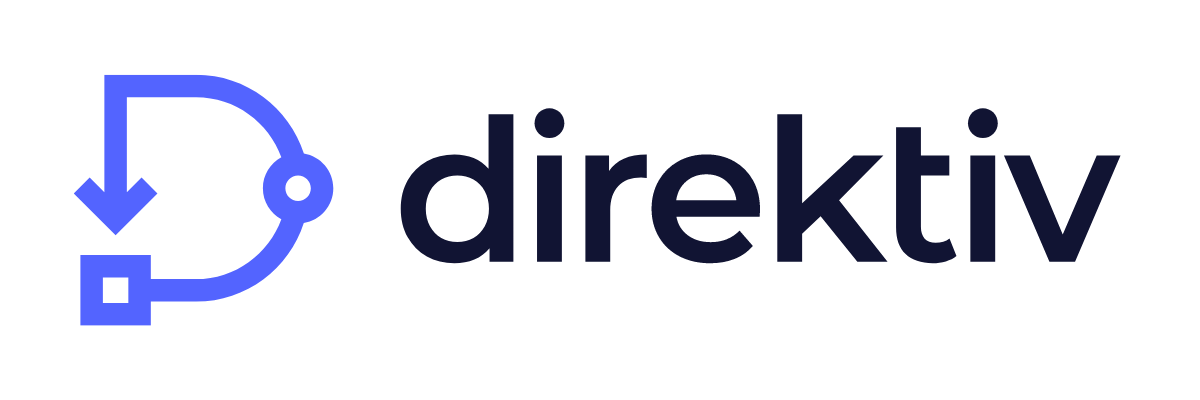Direktiv FAQ: Your Questions Answered

With the recent announcement of the Direktiv Advisory Board and more engineers considering a move to Direktiv’s orchestration platform, new questions have been popping up on our radar that need addressing.
While Direktiv is relatively simple to get started with, deciding if it’s the right move for you can take some consideration. We totally understand. 🤝
Fast. Scalable. Automated. Reliable.
👆 These are just a few of the advantages you can experience with our powerful orchestration platform. We don’t want you to be held back because of not knowing if you’re limited to cloud deployment (you’re not) or if you’re restricted to a certain programming language (also no).
Let’s start with what Direktiv is (and isn’t) to get off on the right foot. Then we’ll jump into some rapid-fire questions and answers. Let’s get into it.
Is Direktiv…
An Automation Engine?
An automation engine is like having a super-smart virtual assistant that can handle tasks and processes with flawless execution.
It’s a cutting-edge software solution that empowers organizations to achieve seamless task execution and process automation without the need for human intervention. Automation engines streamline business operations and enhance operational efficiency by utilizing predefined rules, triggers, and workflows. 🦾
So, is Direktiv an automation engine like Ansible?
Direktiv is similar to Ansible, in that it’s also an automation tool. But each targets different key areas depending on your specific needs. Direktiv is focused on cloud-native workflows and event-driven automation in containerized environments. Ansible, on the other hand, focuses on configuration management and automation of IT infrastructure.
While they share similarities, Direktiv is actually technology agnostic and can even run Ansible directly on the platform.
A Workflow Engine?
A workflow engine is like the conductor of an orchestra—ensuring all the tasks in your organization's symphony play in harmony. 🎶
It gives you the power to choreograph a series of automated steps and activities to achieve an endless stream of tasks—at scale. From business process management to IT operations, a workflow engine helps reduce errors, streamline tasks, and enhance overall visibility and control.
So, does Direktiv perform as a workflow engine like AWS Step Functions?
While Direktiv is similar to AWS Step Functions, it offers much more than that. You have the ability to leverage microservices, containers, or code to build simple, yet powerful workflows. Direktiv is also provider-agnostic, meaning you are not tied to a specific cloud provider’s (like AWS) solution. 🪢
A Message Bus?
A message bus is like the ultimate traffic cop at a busy intersection where multiple applications and components are continuously honking horns at each other. 🚌
It acts as a strict communication system to let applications exchange messages in a decoupled, asynchronous, and scalable way. It’s a go-to tool for event-driven applications where components need to talk to each other without getting too attached or getting in the way.
So, is Direktiv a message bus like Kafka?
While Direktiv uses message buses for input/output data, that’s where the similarities end between the two. Kafka focuses solely on event streaming (servers and clients communicating via high-performance network protocol), while Direktiv implements these procedures to produce near real-time event-driven orchestration workflows.
A Batch Processing Platform?
These types of platforms are the wizards of data processing. They allow organizations to tackle massive volumes of data in one fell swoop. 🧙♂️These platforms have features like data:
- Ingestion
- Transformation
- Validation
- Enrichment
- Aggregation
- Loading
- Output
Essentially, if it involves data, these platforms can tackle it.
So, is Direktiv a batch processing platform like BMC Control-M?
The short answer is yes. Direktiv can handle batch processing, like BMC Control-M and other similar platforms. However, Direktiv also allows clients to use existing code without having to start from scratch. If you’re thinking of a platform switch, hang on to your existing workflows. No need to trash them and start over. 🗑️🚫
A PaaS or API?
Platform as a Service (PaaS) and APIs are tools used by developers. PaaS provides a cloud-powered platform for developers to build, run, and manage applications without the headache of infrastructure, servers, or networking. APIs generally offer pre-built functionalities and services that let you add features to your applications. They make a great sidekick for developers, allowing them to focus on their core business logic.
So, is Direktiv considered a PaaS or API Platform like MuleSoft?
Not quite. Direktiv does, however, expose all workload executions as API calls to PaaS and API management platforms like MuleSoft. But it does not function as a PaaS in the traditional sense.
Rapid Fire Q&A
Now that we have a better understanding of what Direktiv is, let’s quickly run through the top questions we see time and time again. 👇
Does Direktiv automatically scale resources based on changes in workload?
Yes, it has built-in auto-scaling capabilities that allow it to automatically adjust resources based on workload fluctuations. This ensures efficient resource allocation and optimal performance as the workload changes.
Do you have to use Direktiv’s containers?
No, you can use your own containers if you prefer.
Are you limited to public cloud deployment?
No, you can choose from cloud or on-premise deployment. You can also choose to run a hybrid deployment model if you wish.
Does Direktiv automatically provision new resources to replace failed ones?
Yes. It is designed to automatically handle failures and provision new resources to replace the failed ones quickly. When a failure occurs during the execution of an automated task, Direktiv’s built-in fault tolerance and error handling mechanism kicks swiftly into action.
What do I need to install Direktiv?
For a basic installation, use PostgreSQL database and a Kubernetes cluster. Kubernetes is an open-source container platform for managing containerized applications.
Am I restricted to a certain programming language?
No, the components run as industry-standard containers. This means you can use Go, JavaScript, Python, or other languages to interact with Direktiv. No need to learn a new language—just bring your coding skills, and you’re all set.
Does Direktiv trigger specific actions in response to security alerts?
Yes, you can create security workflows to trigger based on certain conditions or events. For example, you can create a workflow that monitors a security alert channel or receives alerts from a monitoring system. When an alert is detected, your pre-configured workflow will automatically execute.
What does Direktiv use for orchestration flow?
You have the choice of using either YAML or a UI builder.
How many pre-built containers are on the platform?
We’ve created over 50+ containers. You can review the entire catalog at DirektivApps.
Is there only one version of Direktiv?
No, there is a free Open Source Edition (OS), along with a paid Enterprise Edition (EE). The OS edition is a fully functional orchestration engine and API via GitHub. EE takes orchestration to the next level with 24/7 critical support and other powerful features.
Final Thoughts
Now that we’ve cleared the waters on some of the most frequently asked questions, are there any other outstanding questions you have? If so, drop us a line and let us know. We’d be happy to chat. 😁
Or if you’ve had your questions answered and are ready to get in on the action, get started for free today. You’ll have immediate access to a fully functional and powerful orchestration engine that will take your workflow automation to new heights. 🛫

.png)

